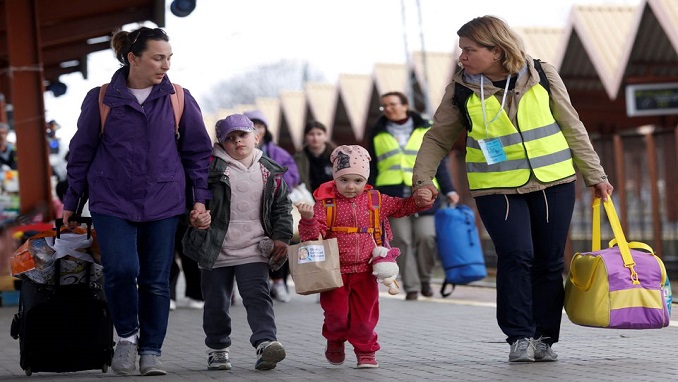As the cold weather begins to announce the upcoming winter, Eastern European countries are preparing for a new wave of Ukrainian refugees in what is predicted to be a very cold and unmanageable winter.
Roman Dohovic, an aid coordinator for the eastern Slovak city of Košice, said that they’re being called by Košice-based people who are looking for accommodation for family members and acquaintances who are still in Ukraine.
He noted that they’ve already started to feel the increase in numbers which is currently up 15% and is expected to rise.
As winter is looming and Russian troops are continuing to target Ukraine’s critical infrastructure, power grid, and heating plants, countries bordering Ukraine are reopening reception centers and restocking food supplies in preparation for the possible inflow of hundreds of thousands of refugees.
Current estimates are that over 6.9 million Ukrainians are displaced internally in Ukraine and UNHCR reports that about 4.5 million Ukrainian refugees are registered under various protection schemes across Europe.
The number of refugees leaving Ukraine dropped in late spring after the initial increase enticed by Russia’s invasion in February, with some returning after Ukrainian forces liberated some of the occupied territories.
Meanwhile, Ukraine’s military said that Russian troops in occupied areas of the southern Kherson region have stepped up their scrutiny of civilians, detaining locals to root out partisan resistance. Noting the continuing efforts of the Ukraine army to break Russian logistics and destroy its potential to keep the south of Ukraine in occupation, Ukraine president Zelensky said that Kyiv units are acting carefully, thoroughly, and in the interests of liberating the entire territory.
With regard to the other occupied territories of Ukraine, Zelensky vowed not to yield a single centimeter in battles for the eastern industrial region of Donetsk where focal points of the conflict are around the towns of Bakhmut, Soledar, and Avdiivka.
Donetsk, one of four regions Russia annexed in September, has seen the heaviest fighting since Russia invaded Ukraine in late February though fighting between the Ukrainian military and Russian proxy forces there had been going on there since 2014 after Russia annexed Crimea in the south.
